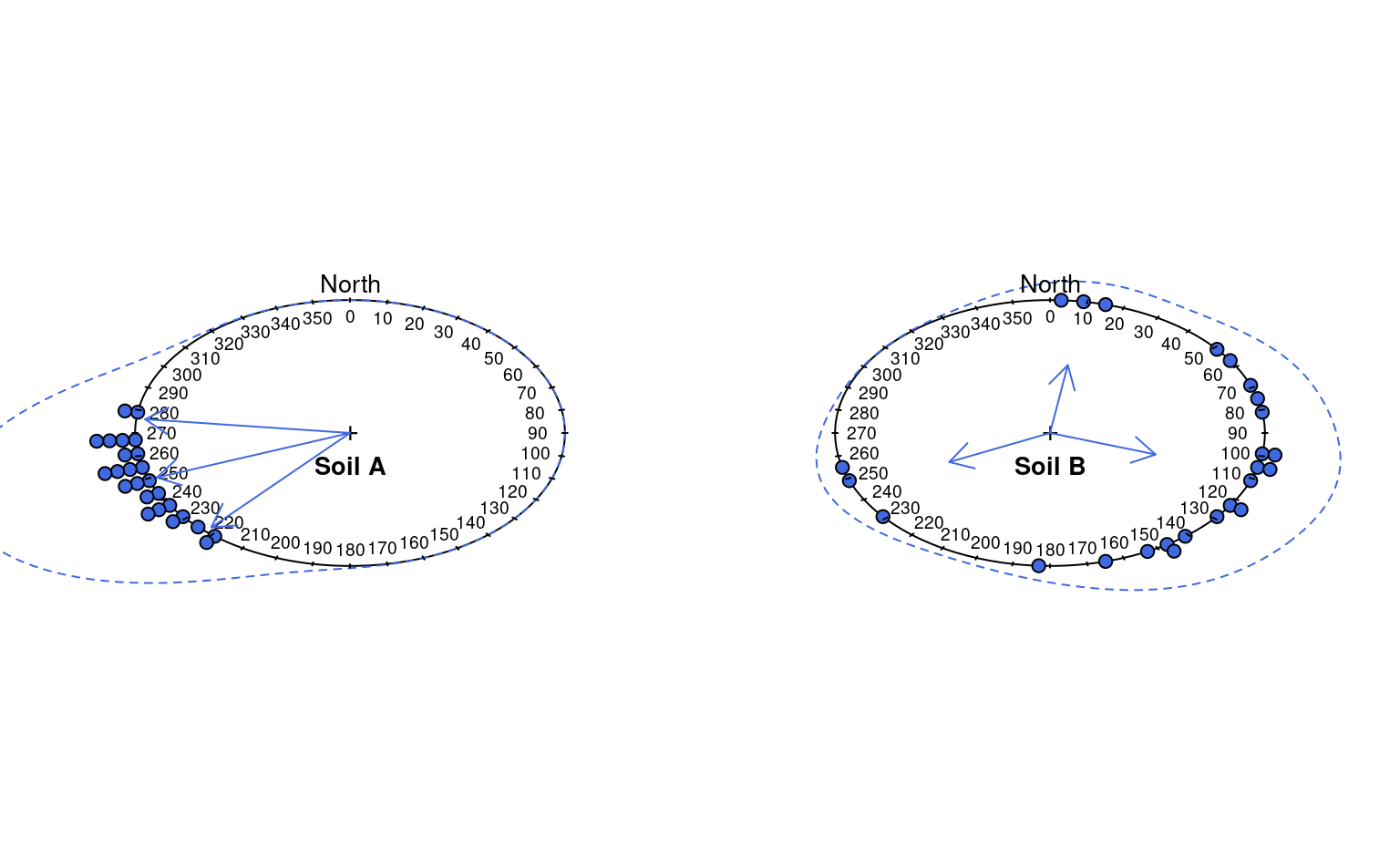Plot a graphical summary of multiple aspect measurements on a circular diagram.
Arguments
- p
a vector of aspect angles in degrees, measured clock-wise from North
- q
a vector of desired quantiles
- p.bins
number of bins to use for circular histogram
- p.bw
bandwidth used for circular density estimation
- stack
logical, should the individual points be stacked intop.binsnumber of bins and plotted- p.axis
a sequence of integers (degrees) describing the circular axis
- plot.title
an informative title
- line.col
density line color
- line.lwd
density line width
- line.lty
density line line style
- arrow.col
arrow color
- arrow.lwd
arrow line width
- arrow.lty
arrow line style
- arrow.length
arrow head length
- ...
further arguments passed to
circular::plot.circular
Value
This function is primarily called for graphical output, also invisibly returns circular stats.
Details
Spread and central tendency are depicted with a combination of circular histogram and kernel density estimate. The circular mean, and relative confidence in that mean are depicted with an arrow: longer arrow lengths correspond to greater confidence in the mean.
Note
Manual adjustment of p.bw may be required in order to get an optimal circular density plot. This function requires the package circular, version 0.4-7 or later.
Examples
# simulate some data
p.narrow <- runif(n = 25, min = 215, max = 280)
p.wide <- runif(n = 25, min = 0, max = 270)
# set figure margins to 0, 2-column plot
op <- par(no.readonly = TRUE)
par(mar = c(0, 0, 0, 0), mfcol = c(1, 2))
# plot, save circular stats
x <- aspect.plot(p.narrow, p.bw = 10,
plot.title = 'Soil A', pch = 21, col = 'black', bg = 'RoyalBlue')
y <- aspect.plot(p.wide, p.bw = 10,
plot.title = 'Soil B', pch = 21, col = 'black', bg = 'RoyalBlue')
 # reset output device options
par(op)
x
#> Circular Data:
#> Type = angles
#> Units = degrees
#> Template = geographics
#> Modulo = 2pi
#> Zero = 1.570796
#> Rotation = clock
#> 5% 50% 95%
#> 277.0983 241.1513 217.4494
#> attr(,"uniformity")
#> Rayleigh Uniformity p Value
#> 9.469001e-01 8.573705e-10
# reset output device options
par(op)
x
#> Circular Data:
#> Type = angles
#> Units = degrees
#> Template = geographics
#> Modulo = 2pi
#> Zero = 1.570796
#> Rotation = clock
#> 5% 50% 95%
#> 277.0983 241.1513 217.4494
#> attr(,"uniformity")
#> Rayleigh Uniformity p Value
#> 9.469001e-01 8.573705e-10